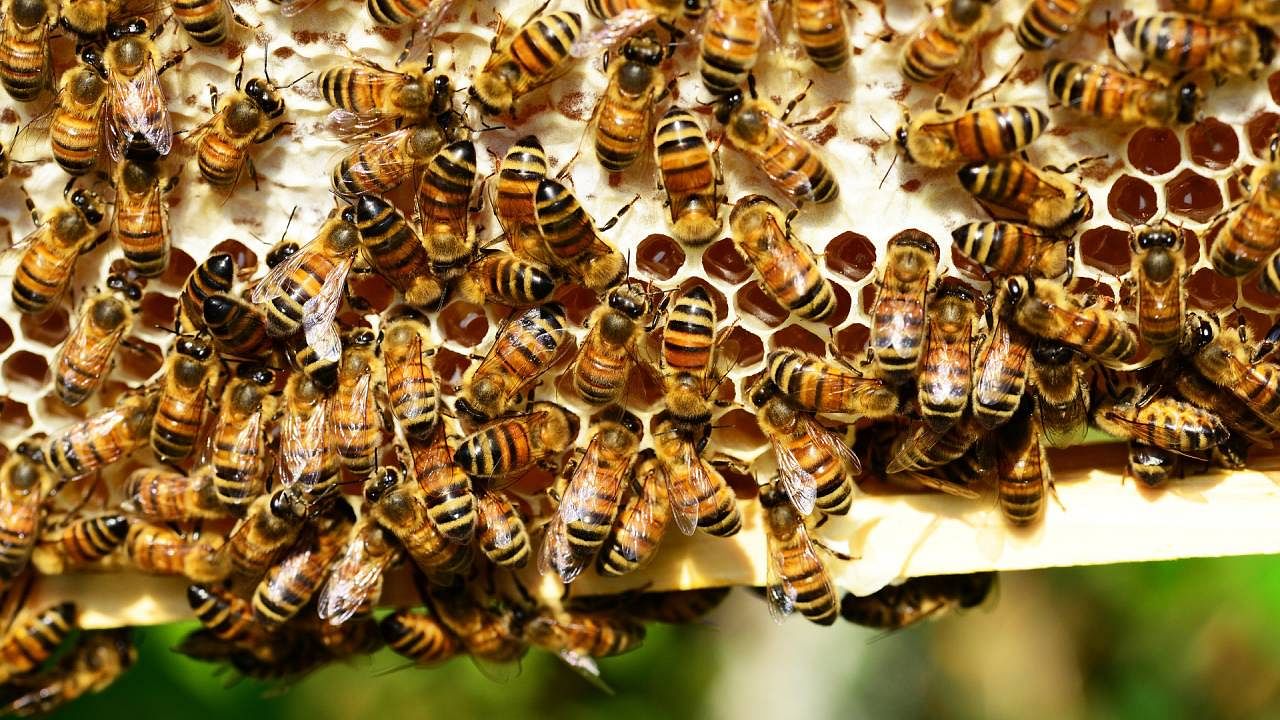
In an attempt to prevent incidents of human-elephant conflict, the Madhya Pradesh government has decided to pit tiny honey bees against wild elephants that stray into farms and destroy crops in the border districts of the state.
Intoxicated on mahua flowers, pachyderms wander into the border districts and leave a trail of destruction before they are driven away or return to neighbouring Chhattisgarh.
In a circular issued last week, the state government listed a standard operating procedure (SOP) with a host of do's and don’ts for people in the eastern part of the state, officials said. As one of the measures, people have been advised to install bee boxes in the affected areas to ward off elephants, they said.
Also Read | Munnar tourism lobby milks wild elephant scare
Elephants have a natural fear of bees, as they dislike being stung on their trunks and eyes.
Beekeeping will be promoted in the villages of Sidhi, Singrauli, Shahdol, Anuppur, Umaria, Dindori and Mandla districts that have a significant indigenous population, officials said.
The latest step will not only protect crops and property, but it will also provide livelihood to indigenous population in the districts bordering Chhattisgarh, officials said.
Also Read | 97 domestic elephants taken out of Assam for 'religious purpose' since 2006, not returned
According to officials, the Khadi and Village Industries Commission, through its flagship "Honey Mission" programme, had distributed 100 bee boxes to 10 beneficiaries in Morena district last year.
The state forest department has roped in NGOs to spread awareness among local communities about tricks to tame and drive away tuskers, they said.
“We have asked NGOs that have experience of working in areas affected by wild elephants to impart training and share their experiences with the local communities,” principal chief conservator of forests (wildlife) J S Chauhan told PTI.
With a little bit of understanding about the animal and by exercising restraint, people can avoid damage to life and property to a great extent, he said.
Tuskers can be chased away using high intensity lights, firecrackers, burning cow dung cakes laced with chilli powder, buzzing sound of bees and by beating drums, the official said.
“Our department is sharing these time-tested techniques with locals. We are constituting 'hathi mitra dals' to bridge the gap and share information with our field staff,” said Chauhan, who is also the chief wildlife warden of the state.
Apart from this, solar fencing will be put up in sensitive areas to keep elephants at bay, he said.
Locals will be told not to hurl stones at elephants or confront them, as it may agitate the animals, the official added.
As per official data, more than eight people were killed last year by wild elephants that wandered into the state from Chhattisgarh.
In April last year, a herd of pachyderms had killed five people in the Amjhor area of Shahdol after crossing over from Chhattisgarh.
A heap of mahua flowers, worth Rs 2 lakh, collected by some villagers had lured these elephants.
According to wildlife experts, elephants move towards human settlements in search of water and fodder in summers, as the water bodies in forests dry up and run thin.
As per official data, Madhya Pradesh had just seven elephants in 2017.
“This number has now touched the 60 mark. At least 60 wild elephants from Chhattisgarh have settled in Bandhavgarh Tiger Reserve (BTR) and Sanjay Dubri Tiger Reserve (SDTR) besides other animals straying occasionally,” Chauhan said.
As many as 50 tuskers have made BTR their home, while the rest have settled down in SDTR, another officer said. “Wild animals have created a corridor from Jharkhand and Odisha to Chhattisgarh,” Ajay Dubey, founder secretary of Prayatna, an NGO working for wildlife causes and wildlife expert, told PTI.
The state government had sounded an alert after tuskers killed five people in just two days in Shahdol, indicating how alarming the situation has turned in the last couple of years, he said. "Illegal felling of trees, degradation and fragmentation of habitat due to mining, linear infrastructure, power projects among other things in Jharkhand and Odisha had forced elephants to move to Chhattisgarh and subsequently to Madhya Pradesh," Dubey said.
The lack of interstate coordination to address the problem among other reasons had caused human-elephant conflicts and loss of lives, he added.